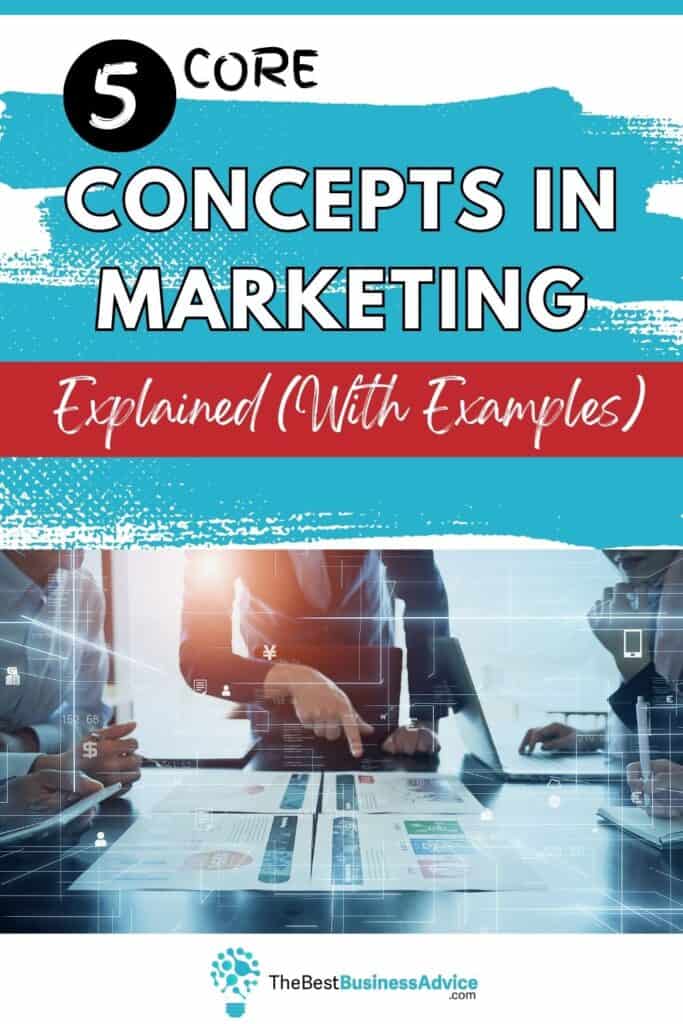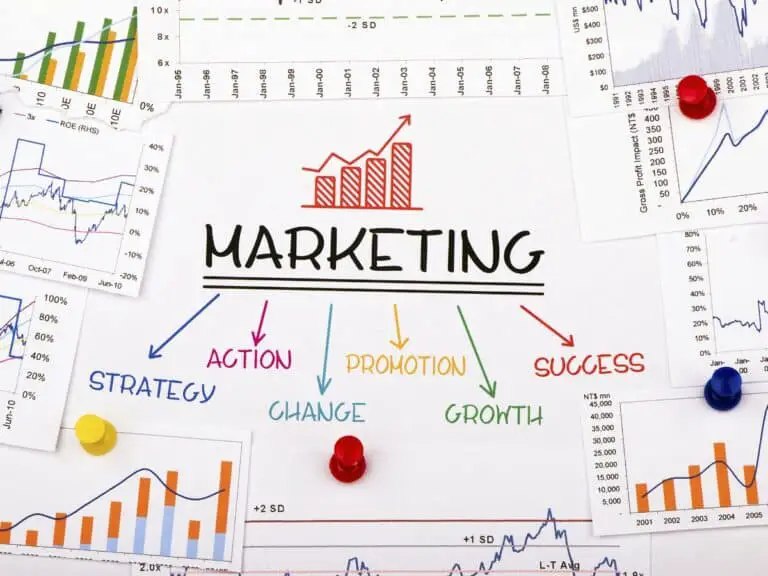5 Core Concepts In Marketing- Explained (With Examples)
Philip Kotler – acknowledged as the father of modern marketing – defined marketing as the science of exploring, generating, and delivering products and services to satisfy a target market’s unfulfilled needs or desires at a profit.
Marketing has five core concepts that complete and ensure an effective marketing system.
The five core concepts in marketing include:
Table of Contents
Many companies often misunderstand and undervalue marketing due to common misperceptions and improper execution. Today, many people mistake marketing for selling and advertising, believing marketing only exists to support manufacturing, sell products, and increase customer acquisition and retention.
However, marketing is far more comprehensive. The American Marketing Association’s (AMA) definition of marketing reflects its true foundational role: “Marketing is the activity, institutions, and processes for creating, communicating and delivering or exchanging offerings with value for clients, customers, partners, and the society.”
Marketing, therefore, is less about launching and selling an innovative product and more about the research, preparation, and art of creating true customer value. This includes:
- Creating a market or expanding an existing one.
- Developing and understanding how a product or service will meet the customer’s needs, wants, and values.
- Building a customer experience that turns the offered product into a customer solution.
Marketing starts before a product is even created. It is the organization’s “homework” to determine what people need and how the company can meet those needs. This is a long-term effort that determines how to launch, price, distribute, promote, and improve a product or service in the chosen marketplace.
The core marketing concepts suggest that a company should espouse a societal or “customer first” approach to marketing. It needs to focus on building a strategy to meet the needs of people while forming profitable relationships.
Simply put, the business needs to shift its focus from finding a buyer for their product to finding the best products for its customers.
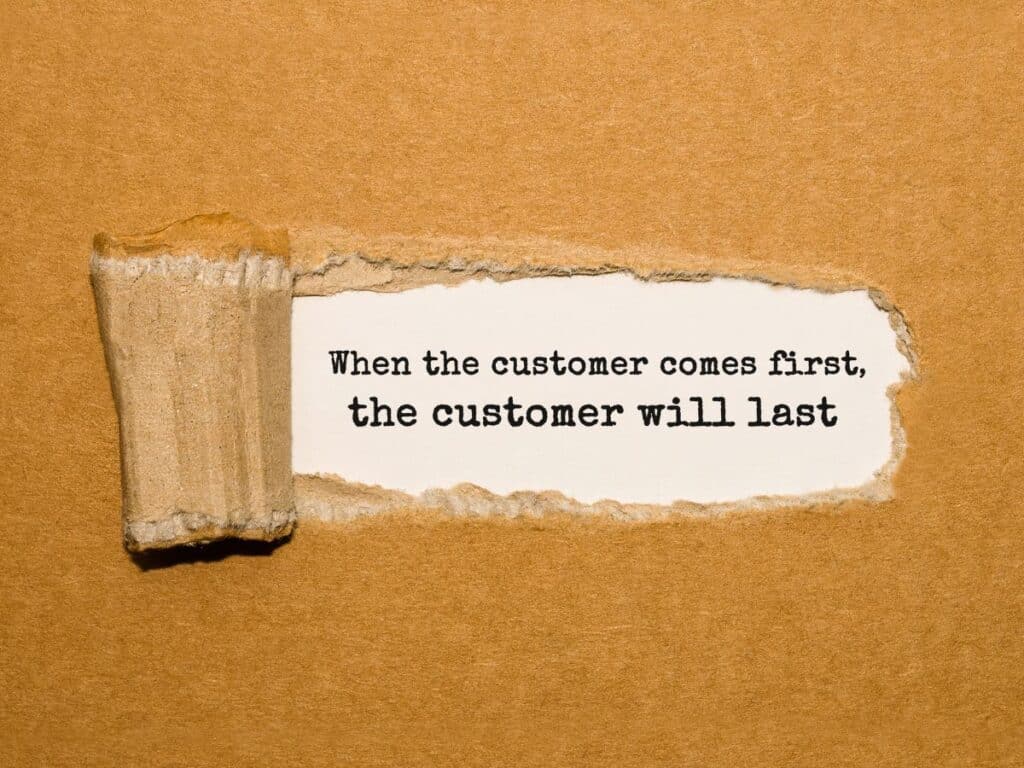
We’ll be looking at the five core marketing concepts organizations need to adopt to ensure a complete and well-functioning marketing system.
1. Customers’ Needs, Wants, & Demands
With fierce market competition, an organization needs to develop a product or service that stands out and appeals to the target market.
The first core marketing concept is identifying and meeting customer needs, wants, and demands. They are the primary driving force for customers to engage with your products and services and ensure you deliver the most value to buyers.
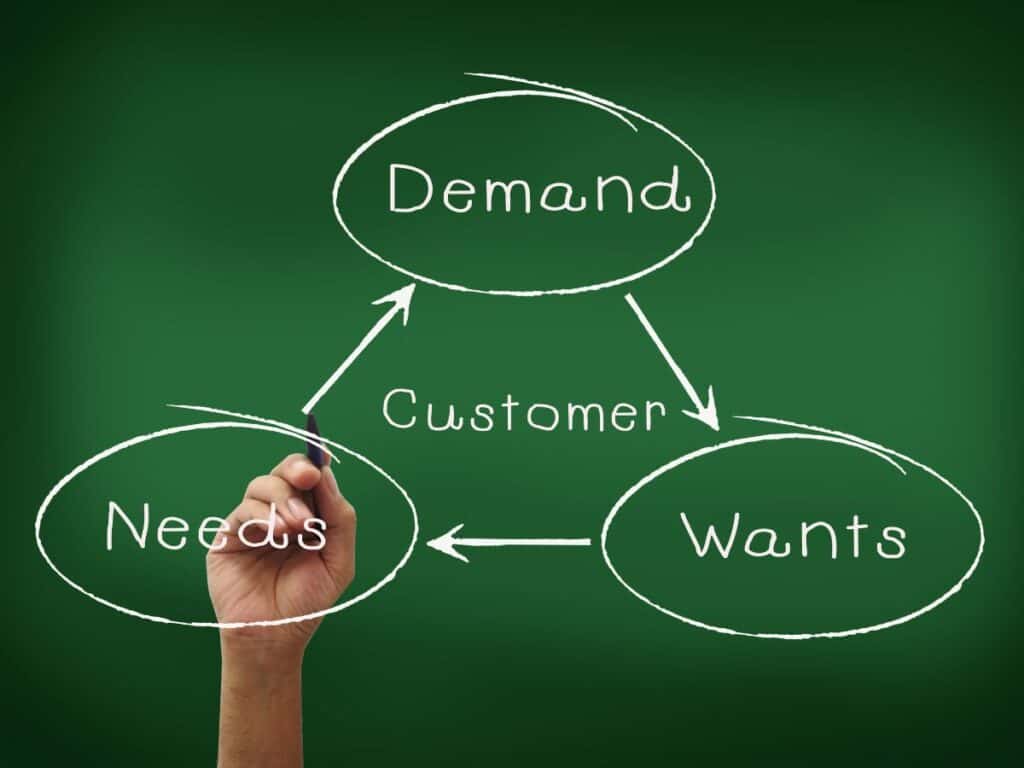
Customer Needs
The driving force behind customer needs is human psychology and behavior. They represent a state of felt deprivation. Every human has needs; some are temporary, while others are deeply seated in our nature.
A customer’s needs are explicit or hidden reasons for purchasing a product. Their root lies within the biological and psychological needs of humans.
- Primary needs: Biological needs range from basic physical needs like food, water, sleep, shelter, and clothing critical to one’s survival.
- Secondary needs: Psychological needs are social and emotional needs like love, belonging, nurture, security, independence, self-esteem, and self-fulfillment.
Customers typically support companies that meet most of their needs. Identifying these needs is essential to product development and marketing.
Customer Wants
A consumer’s want reflects the desired preference or method to satisfy a basic need. Marketers can strategically influence wants by creating and satisfying them.
For example, a person wants mc Donald’s because they need to eat. Or someone needs a new car but wants a Ford Explorer for its pleasant ergonomics and attractive appearance.
These are brands, products, services, and experiences a person desires but can live without. Meeting these requirements can also change frequently depending on factors like available choices, culture, environment, perception, surroundings, experiences, and age.

Demands
Demands are when specific needs or wants are supported by buying power. A demand is created when a customer desires a resource and is willing and able to pay for it.
For example, many people would like to drive a Ford Explorer, but not everyone can afford it. So, only the wants backed by purchasing power are calculated as demand.
Demand is critical for marketers. It is the chief economic driver and plays a major role in managerial decision-making and strategic marketing planning. Marketers can influence demand by making products attractive, affordable, and readily available.
2. Market Offerings: Products, Services, And Experiences
A market offering is a product, service, or experience a business provides customers to meet their needs and wants. Market offerings help generate customer interest and increase brand loyalty.
The offering encompasses more than the product or service itself. It includes the extra value and benefits that a business adds to its products, like quality, convenience, and support.
Customers prioritize offerings differently. So it’s essential for companies to offer products and services that align with the target market’s needs and wants. Including various features and benefits in their offerings will also help attract a wide range of customers.
Companies create market offerings by first determining the difference between their own product and the competitor’s products. Then, the marketing team identifies ways to put an “edge” over their products by meeting consumer needs, using innovative technology, and creating unique, competitively useful products or services from competitors.
The aim of the marketing team is to create awareness about the market offering, encouraging consumers to purchase it.
Product
Products are tangible – perceptible by touch – items a business offers consumers. Potential customers may want to acquire or consume these items.
Examples of products include:
- Food and drinks
- Clothing
- Toys
- Electronics
- Cars
- Houses
Service
Services are intangible – not able to be touched – items that a business offers to consumers. They are often jobs, tasks, and experiences that benefit customers.
Unlike products, services require a form of interaction with customers and clients, whether online or at the shop.
Examples of services include:
- Health care
- Personal care
- Legal services
- Financial services
- House repairs and cleaning
- Automotive repairs
Experience
Customer experience involves every way a customer or client interacts with a company and their perceptions of those interactions.

Customer experience involves all the stages of a customer’s journey, including the marketing materials seen before becoming a customer, their sales experience, the quality and experience of the product or service, and the customer service received post-purchase.
Customer experience is also always ongoing. It involved advertisements, visits to your company website, conversations with customer service, and interactions with the sales rep.
3 Ps of Customer Experience
A straightforward and effective way to ensure a positive customer experience is to focus on the 3 Ps:
- People: People are the most critical part of the customer experience. Companies need to put the time, effort, and finances into cultivating strong, positive customer relationships, whether on-site employees or online support agents.
- Process: The process is a large-scale concept that involves the company’s required actions to perform tasks Customers always prefer seamless and positive experiences during their buyer journey. This can be anything from answering the phone, simplified payment methods, swift delivery services, or quick and effective customer support.
- Product: Customers want innovative, high-quality products that meet their needs and solve their problems. Businesses need to ensure that their products and services meet (or exceed) these standards.
3. Customer Value & Satisfaction
Customer value and customer satisfaction are two closely related core marketing concepts. However, it’s incorrect to use the terms interchangeably as they each have a different effect on the consumer’s buying decision.
An initial purchase is made based on value, while customer satisfaction determines whether the customer will repurchase the product or not.
| Customer Value | Customer Satisfaction | |
| Meaning | Customer value is the trade-off between the total benefits and the price paid to acquire those benefits. | Customer satisfaction refers to the relationship between a customer’s expectations regarding a product or service and the actual performance. |
| Type of process | Proactive – customer’s pre-purchase evaluation. | Reactive – experience post-purchase. |
| Concept | Relative concept. A comparison of a product or service with its competitors. | Emotional concept. Based on previous experiences, recommendations, seller assurance, and information about competitors. |
| How they are used | Strategic measure | Transactional measure |
| Computation | Total benefits minus total costs | Cannot be quantified |
Customer Value
Customer value is the trade-off between the quality and advantages of a product or service and the price paid to acquire those benefits. It is a proactive process, which occurs before the customer can experience the product – the customer’s pre-purchase evaluation.
Companies must consider customer value metrics to create an innovative product or service with more benefits than competitors at a price that consumers are willing to pay.
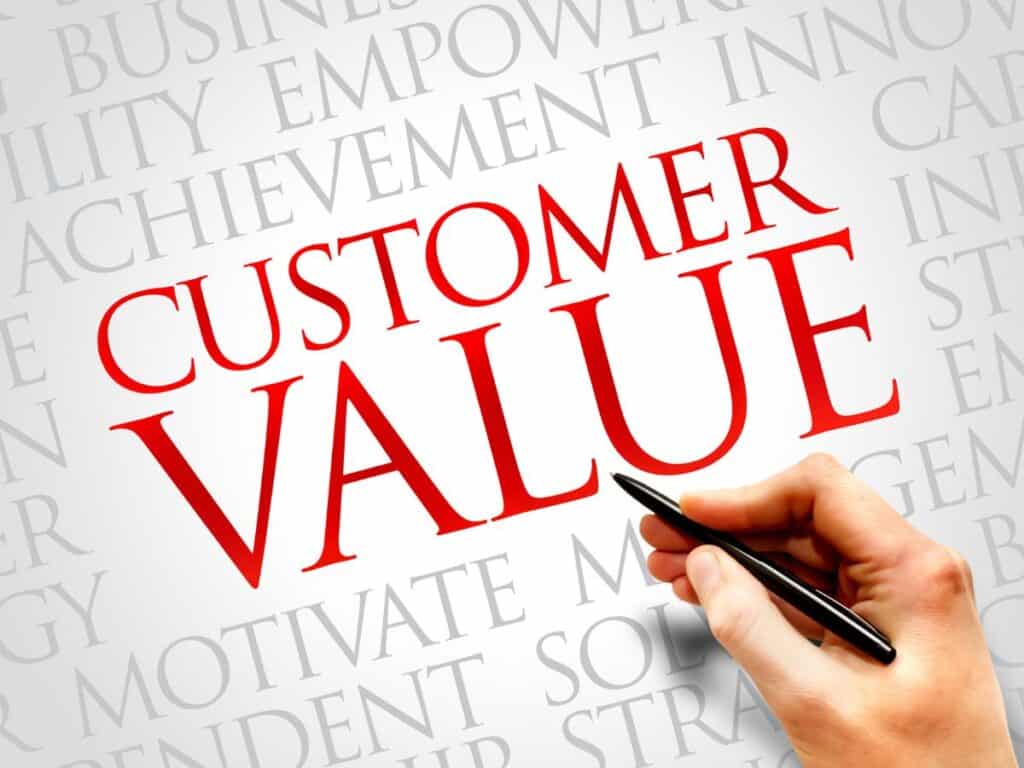
Several critical aspects contribute to the overall customer value, including:
- Customer experience and relationships
- Product alternatives
- Product quality (including warranty, maintenance, and repair)
- Pricing
- Brand
- Free delivery
Customer Satisfaction
Customer satisfaction is a post-purchase phenomenon that refers to the degree to which the customer’s expectations regarding the product or service are consistent with the actual performance. Customer satisfaction is only measured after the product has been purchased.
Customer satisfaction is subjective and challenging to measure. This reactive process is an emotional experience and relies on previous experiences, recommendations from friends, seller assurance, and information about competitors can all influence a customer’s satisfaction.
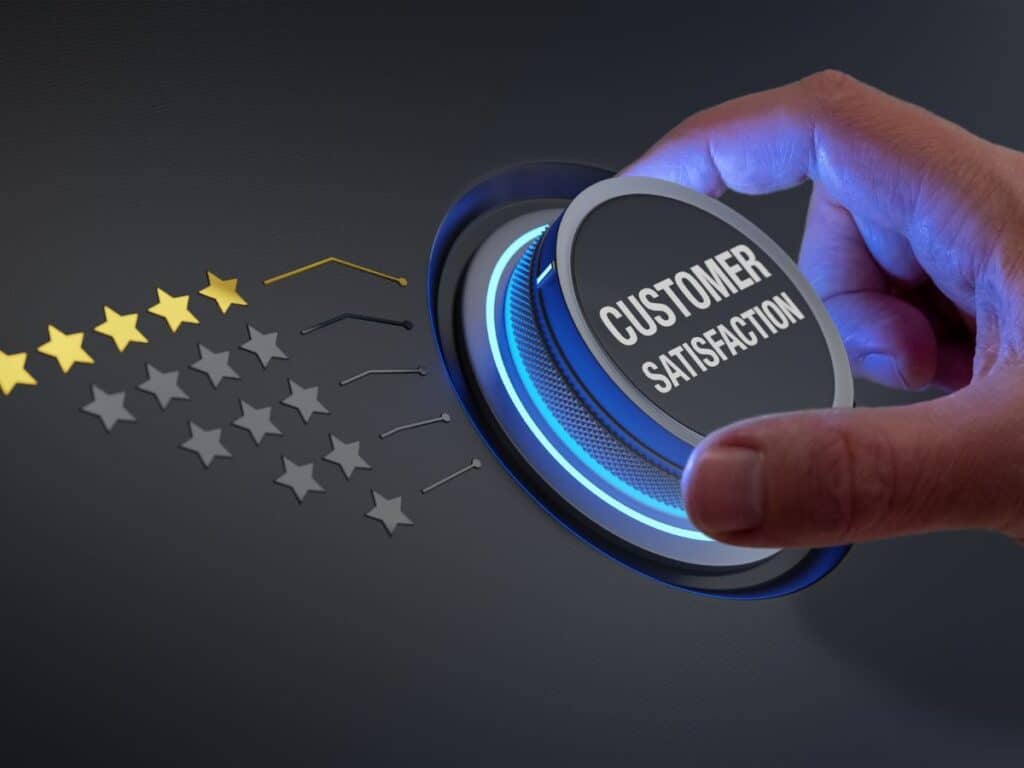
4. Exchange, Transactions, & Relationships
We live in an interdependent world, allowing people to obtain goods and services from producers to consumers. When people satisfy their needs and desires through exchange, transactions, and relationships – marketing happens.
Exchange
Exchange is the trade-off of goods and services between two parties. For the exchange to occur successfully, both parties should be interested in different goods and services and have a mutual interest in exchanging them.
For example, a farmer and header exchange maize for meat. This is known as the barter trade and remains a popular exchange type.
Transaction
During a transaction, goods, and services are exchanged between firms, parties, or accounts for a set amount of money. These transactions occur when products or services are purchased or sold through credit or cash transactions.
In business, transactions directly impact financial records. Accurate recordings of transactions are critical to helping with performance analysis and planning.
For example, a customer buys an iPhone from the store, or a business pays a supplier company for new stock delivered.
Relationships & Networking
Relationships are long-term interactions between buyers and sellers. Relationships aim to build long-term, mutually satisfying between the company, customers, suppliers, sellers, and stakeholders.
Marketers must focus on building and keeping healthy, professional relationships and connections that are profitable and open doors to new opportunities. They should build trust and commitment with customers, distributors, and suppliers.
Networking is closely linked to relationships. It results from building and maintaining solid relationships with clients and other professionals.
Here’s why business networking is important:
- Access to new opportunities
- Generates business leads
- Identify latest trends
- Learn industry standards
- Increased brand awareness
- Received mentorship
- Professional perspectives
For example, networking can provide your company with insight into new sales techniques or information on a competitor’s marketing strategies.
5. Markets
In business, a market is defined as a place or platform where buyers and sellers can gather to facilitate the exchange or transaction of goods, services, currency, or information. The market can be physical (e.g., retail outlet) or virtual (e.g., online market) with direct or indirect contact.
Marketers need to understand the market economy to ensure success. Market system factors like investments, production, distribution, and prices are led by supply and demand from companies and individuals.
FAQs
What Are The Core Concepts Of Marketing?
The five core common marketing concepts include identifying customer needs, wants, and demand; understanding market offerings; ensuring customer value and satisfaction; exchanges, transactions, and relationships; and markets.
Why Is Marketing Concepts Important?
The marketing concept is essential as it defines how your organization will drive business and success. It encourages a business to match consumer wants with a company’s capabilities. The marketing concept also helps adapt products or services to match these desires while remaining profitable.
Wrap Up
Markets are saturated, giving consumers a wide range of shopping alternatives. Practicing the five core marketing concepts in a company ensures true customer value and keeps it on the road to success.
PIN THIS FOR LATER…
DID YOU FIND THIS INFORMATION HELPFUL? Share the love on social.
Follow us on Pinterest & Instagram!
ANY OTHER BUSINESS ADVICE WE CAN WRITE ABOUT?

![]()


